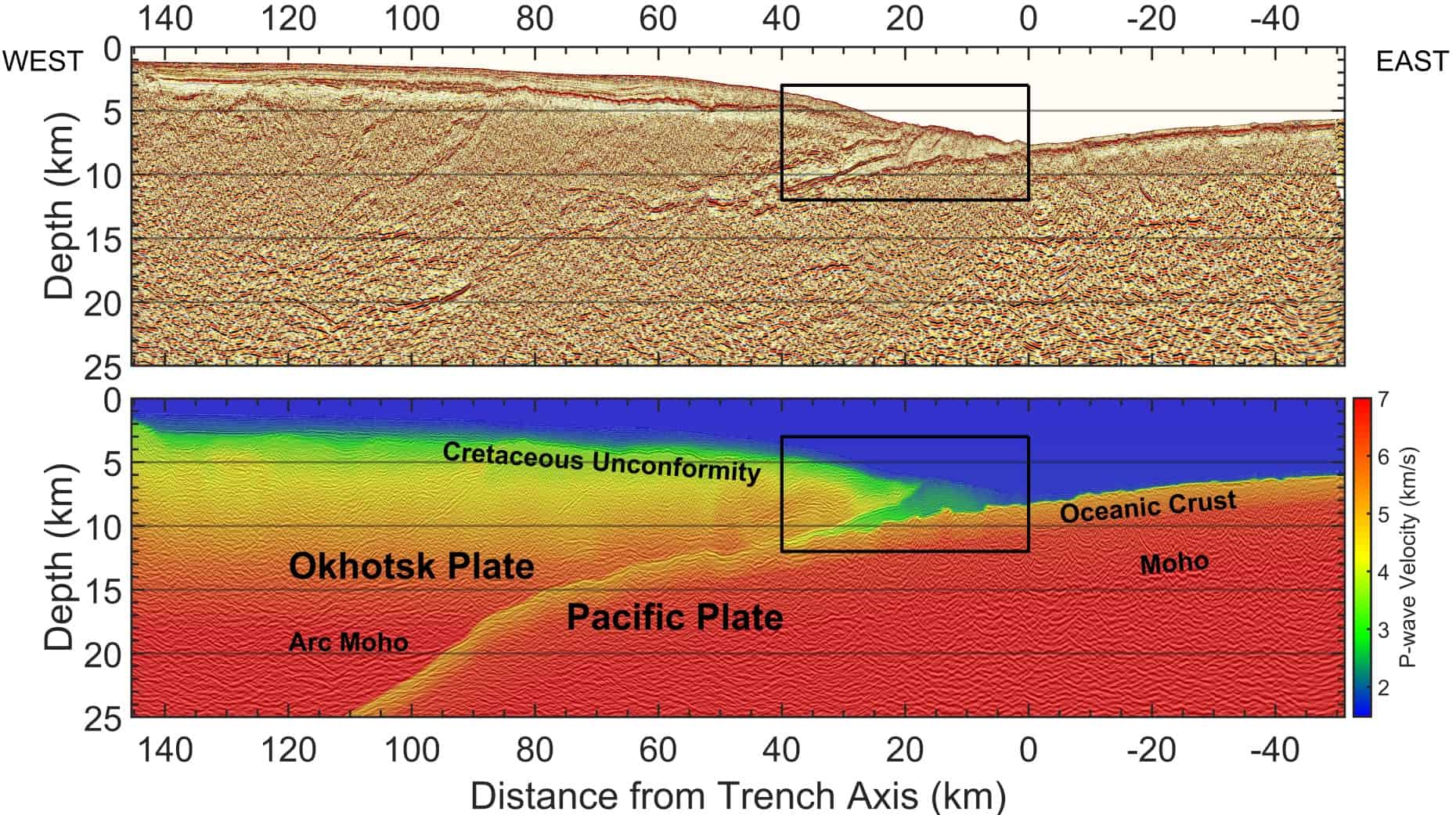
New research on the 9.0-magnitude Tohoku-Oki earthquake explores the intersection between Earth science, material properties and advanced modelling techniques. By combining aspects of these scientific fields, Ehsan Jamali Hondori and Jin-Oh Park at the University of Tokyo were able to identify the role played by undersea sediments in this deadly earthquake, which struck Japan in 2011. The research could also help to identify faults that would be prone to similar earthquakes in the future.
The duo’s work focused on a shallow plate boundary thrust fault, also known as a décollement, which is a very shallow and unstable zone of tectonic activity. This fault is positioned relative to the Japan trench subduction zone off the eastern coast of Japan, and its rupture led to the disturbance on the seafloor that created the tsunami waves associated with the Tohoku-Oki earthquake. This large-scale interpretation is well-accepted; however, what requires further investigation is the stability of the underlying sediments (layered particulates that have not yet become solid rock) that may have affected the rupture propagation of the fault.
Jamali Hondori and Park studied this stability using 2D seismic imaging, followed by a pore-fluid pressure calculation of the sediments at the décollement. The seismic imaging allows for a reconstruction of the geological structures, and the pore-fluid pressure describes the behaviour of the sediment particles as they are subjected to a high-pressure load coming from the ocean above the décollement.
The seismic data and pore-fluid data were collected separately, with the seismic data in the form of a seismogram, and the pore-fluid data plotted against shear strain and distance from the trench.
Data jackpot
The earthquake epicenter was located remarkably close to site 2E, which is a survey location from a previous study. With this prime positioning relative to the décollement, Jamali Hondori and Park hit the jackpot when it comes to seismic depth images.
Seismic depth images of the décollement revealed the formation of an accretionary prism. This is a collection of displaced sediments that have been dredged up and jostled by the region’s tectonic movements. Measuring the relative velocities of the seismic waves through these sedimentary structures allowed the duo to conclude that the pore-fluid pressure of sediments led to destabilization, which in turn led to seismic activity near site 2E.
The research makes an important connection between the cause of the earthquake and how fluid drains from the sediments. This was evaluated by calculating a “fluid overpressure ratio”, which quantifies the drainage and amount of fluid still present in the sediments. Jamali Hondori and Park have shown that beneath site 2E, there is an active drainage path. As a result, the seepage of fluid from the sediments results in lower pore pressure conditions in this zone. At the décollement, however, highly pressurized pore fluid is trapped within the impermeable sediments. This causes fault instability and decreased friction, which favours rupture propagation.
Unstable sediments
In short, the tectonic loading and thermal pressurization of the sediments as they shift along their substrate is the likely culprit for the unexpectedly large fault rupture of the Tohoku-Oki earthquake. In other words, the Tohoku-Oki earthquake was caused by the hydrostatic pressure of the ocean bearing down on sediments. This ultimately destabilized the sediments on a microscopic scale, thereby creating a large-scale tectonic movement.
Were the pore-fluid pressure and hydrostatic pressure equal in magnitude, there would have been no seismic loading. Instead, the disparity between the two is the cause of the large coseismic slip during the earthquake, where coseismic refers to a mechanical event that coincides with seismic activity.
The researchers analysed the shear and vertical effective stress at the fault site, in addition to the ratio of the calculated-to-expected vertical effective stress – which the duo describe as an effective stress ratio. This analysis revealed the fault’s propensity for coseismic slip and rupture, where a low effective stress ratio resulted in both the fault slip and the associated tsunami.
Horizontal displacement

Wave attenuation hints at nature of Earth’s asthenosphere
Finally, Jamali Hondori and Park conclude that complex rupture patterns at the fault created conditions where pore-fluid pressure was instrumental in dictating shear stress levels. As a result, the researchers point out that a horizontal displacement commensurate with fluctuations in sediment stability caused this massive earthquake.
This research also has implications for our understanding of décollement thrust faults, illustrating the importance of the properties of the sediment beneath the fault. It could be possible to study the sediment profile of specific fault and predict powerful earthquakes before they occur. The ability to forecast nature-driven hazards would be invaluable to people living on coastlines, especially as climate change drives the frequency of increasingly serious natural disasters.
The research is described in Scientific Reports.



